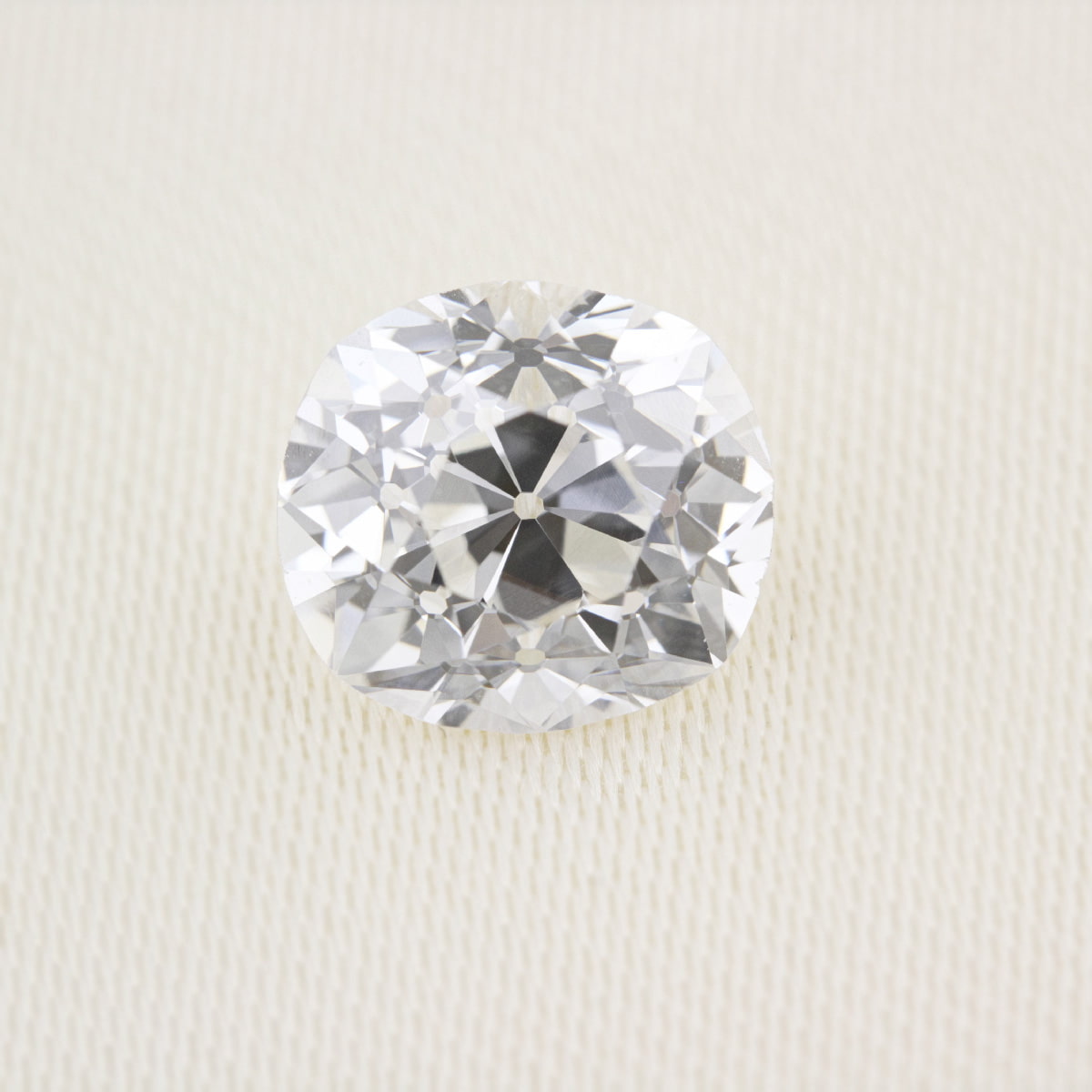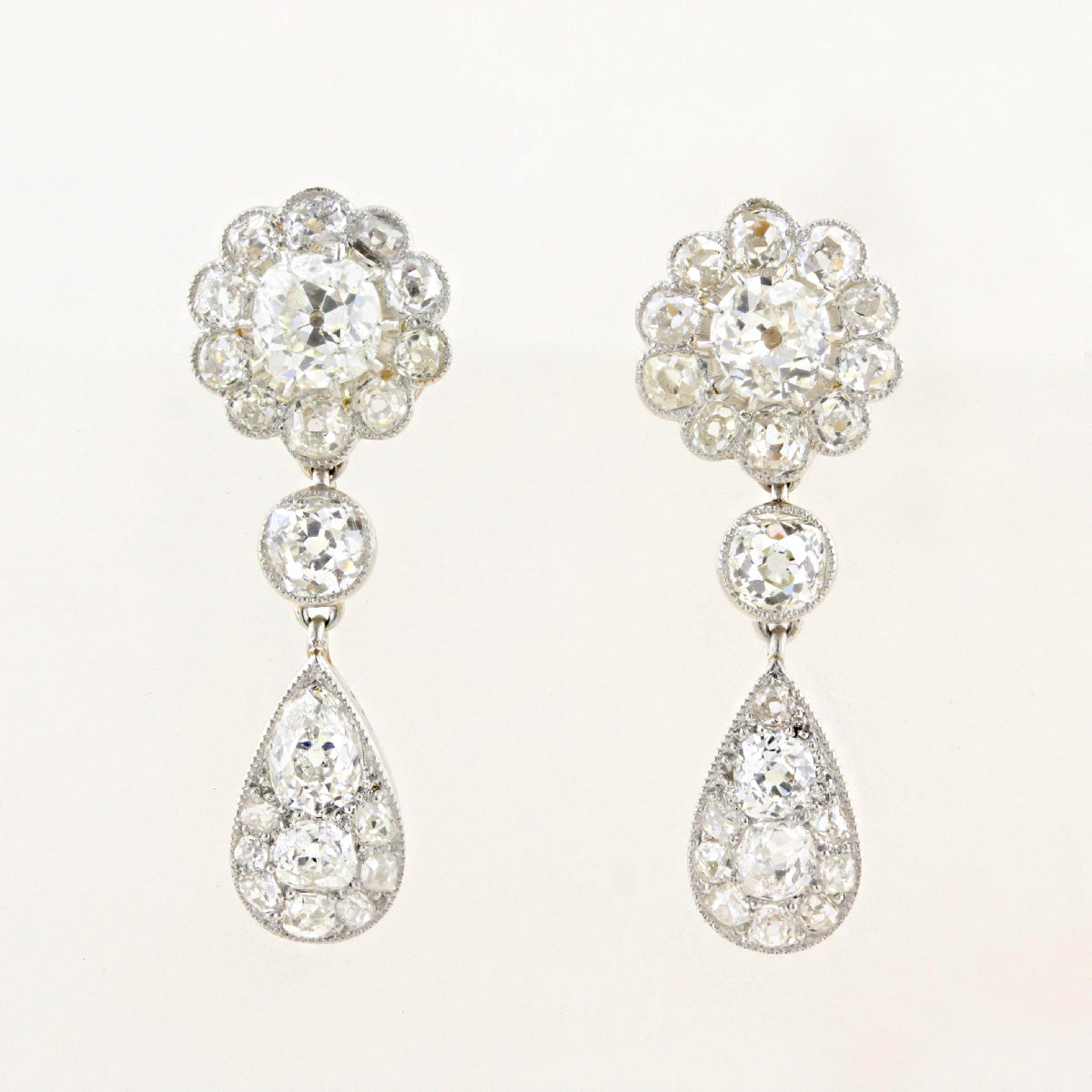The Ultimate Guide to Old Cut Diamonds
Old cut diamonds are beloved for their romantic character, vintage charm, and the craftsmanship that reflects the artistry of a bygone era. With their distinctive light play and hand-cut individuality, these antique gems have a growing appeal among collectors, connoisseurs, and modern jewellery lovers alike.

Historical Background
Origins & Evolution: Old cut diamonds refer to diamonds that were hand-cut before the 20th century, primarily between the 1700s and early 1900s. These cuts evolved over time, beginning with point cuts and table cuts, eventually leading to the more refined Old Mine Cut and Old European Cut styles that we recognise today.
Precursor to Modern Brilliance: Before the invention of precise machinery, diamond cutting was an art led by candlelight. Cutters prioritised symmetry and depth to maximise sparkle in dim lighting. The result? A softer, more romantic glow than the sharp brilliance of modern cuts.

Why Collectors Value Old Cut Diamonds
Historical Provencance: Every old cut diamond carries a story. Often salvaged from antique jewellery or family heirlooms, these diamonds have passed through generations and epochs.
Unique Charm: No two old cut diamonds are the same. Each was cut by hand, so variations in facet patterns and proportions are part of their intrinsic appeal.
Sustainable & Ethical Choice: Choosing an antique diamond helps reduce the demand for new mining. It's a thoughtful way to treasure the past while supporting a more circular future.
Types of Old Cut Diamonds
-
Old Mine Cut
A cushion-shaped cut with a high crown, small table, and deep pavilion. Popular in Georgian and Victorian eras.
-
Old European Cut
Rounder than the Old Mine, with improved symmetry and a distinctive culet. Prominent during the Edwardian and Art Deco periods.
-
Rose Cut & Other Early Cuts:
Rose cuts feature a flat base with domed, triangular facets. Less brilliant, but prized for their antique charm.

Are Old Cut Diamonds Rare?
Yes. especially fine examples. Many old cut diamonds were re-cut into modern shapes during the 20th century, meaning well-preserved antique cuts are increasingly hard to find. Old European and Old Mine cuts in larger sizes or high clarity are particularly sought after.

Grading Old Cut Diamonds
Old cut diamonds are graded using modern criteria, but some allowances are made due to their age and hand-crafted nature. The 4C’s that are used now weren’t around when old cuts were produced, so all old cuts were designed purely to create the most beautiful Diamond from the piece of rough.
How is grading different?
-
Colour
Antique diamonds were often cut to showcase warmer tones. You'll frequently find them in near-colourless to faintly tinted hues (G–K or lower).
-
Clarity
A majority of Old cuts have inclusions, but these are often less noticeable due to the way they are cut compared with a modern stone.
-
Cut
The cut grade is subjective, as these diamonds were not designed to meet modern standards. Instead, their proportions create a more romantic glow than sharp brilliance.
-
Carat
Often slightly under standard weights (e.g. 0.98ct vs. 1.00ct) due to hand cutting, which preserved weight differently.

Tips for Purchasing Old Cut Diamonds
Buy from trusted experts: Old cut diamonds require knowledgeable assessment. Work with specialists who understand antique cutting styles.
Consider the setting: Many old cuts are still in their original settings. While this adds charm, it's worth checking the security of the mount or whether a sympathetic restoration is needed.
Don't expect precision: Unlike modern cuts, old cuts aren’t uniform, and that’s the beauty. Look for charm, fire, and proportion over mathematical perfection.
Old cut diamonds are not just stones, they are fragments of history, each one shaped by hand and story. Their glowing light, subtle irregularities, and connection to the past continue to captivate those who appreciate enduring beauty and timeless romance.

